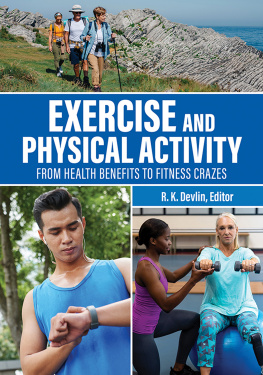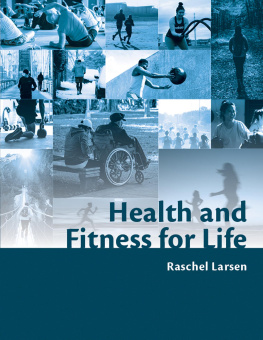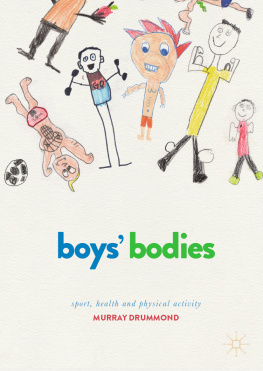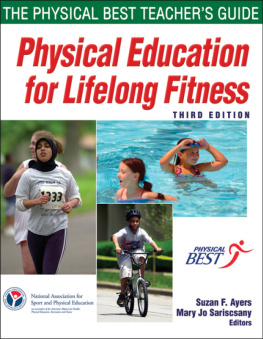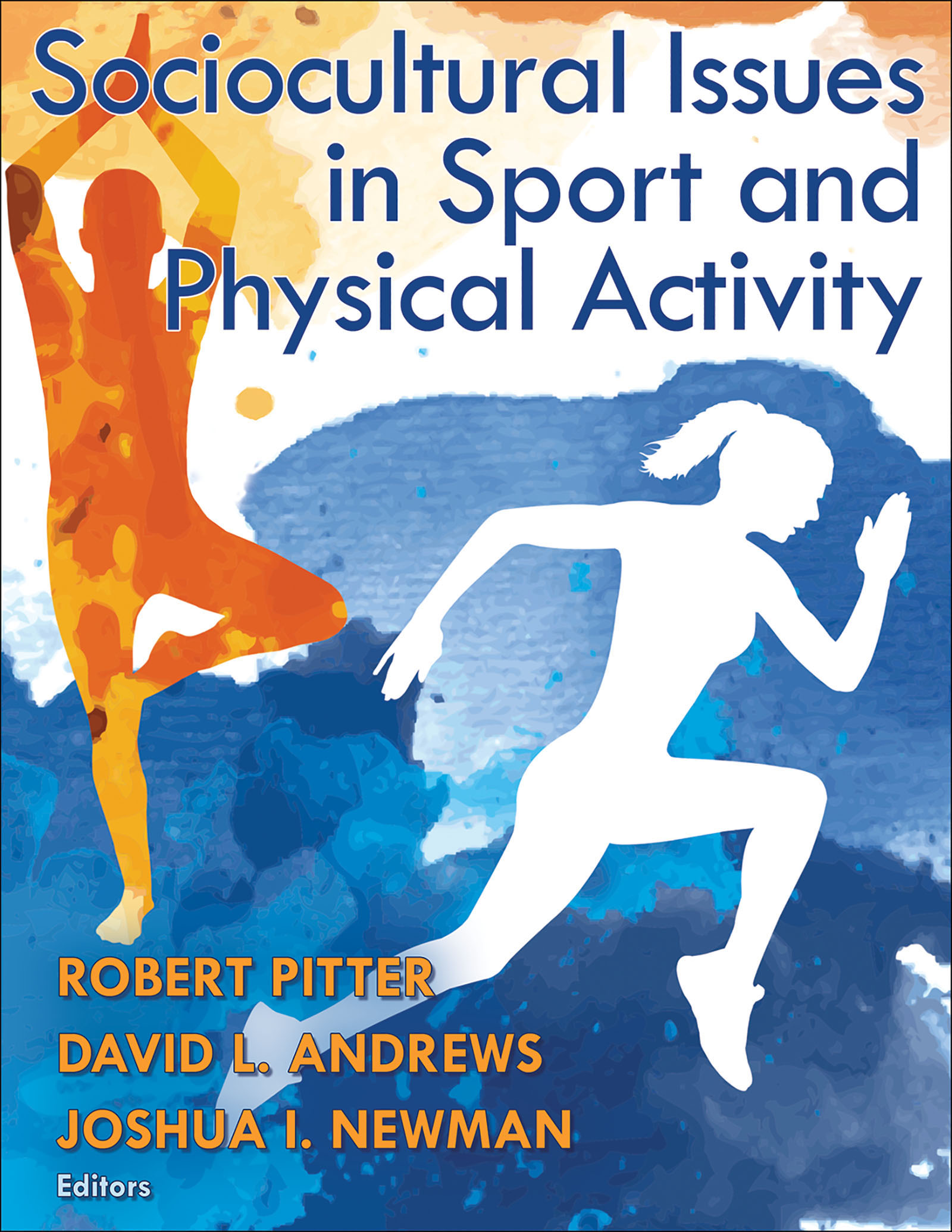Contents
List of Figures
Guide
Pagebreaks of the print version
SOCIOCULTURAL ISSUES IN SPORT AND PHYSICAL ACTIVITY
Robert Pitter, PhD
David L. Andrews, PhD
Joshua I. Newman, PhD
Editors

Library of Congress Cataloging-in-Publication Data
Names: Pitter, Robert, 1958- editor. | Andrews, David L., 1962- editor. | Newman, Joshua I., 1976- editor.
Title: Sociocultural issues in sport and physical activity / Robert Pitter, David L. Andrews, Joshua I. Newman, Editors.
Description: Champaign : Human Kinetics, [2023] | Includes bibliographical references and index.
Identifiers: LCCN 2021053224 (print) | LCCN 2021053225 (ebook) | ISBN 9781450468657 (paperback) | ISBN 9781718203983 (epub) | ISBN 9781718203990 (pdf)
Subjects: LCSH: Exercise--Social aspects. | Sports--Social aspects. | Physical education and training--Social aspects.
Classification: LCC GV481 .S6446 2023 (print) | LCC GV481 (ebook) | DDC 613.7/1--dc23/eng/20211109
LC record available at https://lccn.loc.gov/2021053224
LC ebook record available at https://lccn.loc.gov/2021053225
ISBN: 978-1-4504-6865-7 (print)
Copyright 2023 by Robert Pitter, David L. Andrews, and Joshua I. Newman
Human Kinetics supports copyright. Copyright fuels scientific and artistic endeavor, encourages authors to create new works, and promotes free speech. Thank you for buying an authorized edition of this work and for complying with copyright laws by not reproducing, scanning, or distributing any part of it in any form without written permission from the publisher. You are supporting authors and allowing Human Kinetics to continue to publish works that increase the knowledge, enhance the performance, and improve the lives of people all over the world.
To report suspected copyright infringement of content published by Human Kinetics, contact us at permissions@hkusa.com. To request permission to legally reuse content published by Human Kinetics, please refer to the information at https://US.HumanKinetics.com/pages/permissions-information.
The web addresses cited in this text were current as of August 2021, unless otherwise noted.
Acquisitions Editor: Diana Vincer; Developmental Editor: Jacqueline Eaton Blakley; Managing Editor: Derek Campbell; Copyeditor: Heather Gauen Hutches; Proofreader: Lisa Himes; Indexer: Nan N. Badgett; Permissions Manager: Dalene Reeder; Senior Graphic Designer: Sean Roosevelt; Cover Designer: Keri Evans; Cover Design Specialist: Susan Rothermel Allen; Cover: kalistratova / iStock (background texture); Human Kinetics (figure illustrations); Photo Asset Manager: Laura Fitch; Photo Production Manager: Jason Allen; Senior Art Manager: Kelly Hendren; Illustrations: Human Kinetics, unless otherwise noted; Printer: Sheridan Books
Printed in the United States of America 10 9 8 7 6 5 4 3 2 1
The paper in this book is certified under a sustainable forestry program.
Human Kinetics
1607 N. Market Street
Champaign, IL 61820
USA
United States and International
Website: US.HumanKinetics.com
Email: info@hkusa.com
Phone: 1-800-747-4457
Canada
Website: Canada.HumanKinetics.com
Email: info@hkcanada.com
E6140

Contents
- Robert Pitter, David L. Andrews, Brandon Wallace
- Andrew Grainger, Brandon Wallace, David L. Andrews
- Ryan King-White, Matthew Hawzen
- Katelyn Esmonde
- Adam Beissel, Chris McLeod, David L. Andrews
- Shannon Jette, David L. Andrews, Robert Pitter
- Brandon Wallace, Robert Pitter, David L. Andrews
- Robert Pitter, David L. Andrews, Brandon Wallace
- Mollie M. Greenberg, Stephanie J. Cork
- Michael D. Giardina, A. Lamont Williams
- Robert Pitter, Brandon Wallace, David L. Andrews
- Oliver J.C. Rick, Jacob J. Bustad, Bryan C. Clift
- Joshua I. Newman, David L. Andrews, Robert Pitter
- Martin Barrett, Kyle S. Bunds
Preface
T his book has taken almost 10 years to producecloser to 20, including the moment its necessity first came to my mind. In 2000 I was teaching a required kinesiology course, Introduction to Sociological Aspects of Physical Activity and Sport. Many students were more interested in physical activity than in sports, but the available textbooks focused solely on sport. This was unsurprising given that kinesiology programs have now displaced physical education programs of the past. Kinesiology, like physical education, is concerned with the assessment of bodily movement, performance, and function, but it also includes rehabilitation, prevention, and management of injury as well as workplace health and safety. Organized sport was a central part of physical education but not necessarily of kinesiology. Physical education programs were often contained within or allied with education departments. Over time, however, these alliances withered, and new alliances with departments of health science sprouted. Fifty years ago, most graduates of American and Canadian physical education departments pursued careers as physical education teachers and coaches in K-12 schools, with some becoming sport administrators. Today, many students see kinesiology programs as the best preparation for further training and careers in medicine and physical or occupational therapy. Many of my kinesiology students were curious about active bodies in contexts such as fitness, recreation, and health and wellness.
As the new millennium began, there was very little research to support writing a book that would meet my students interests. Fortunately, that changed as some academics began to shift their focus away from sport toward other forms of physical activity or toward health. In keeping with that shift, I designed a well-received senior-level undergraduate course that drew on this burgeoning literature. Realizing that it was now possible to produce a book that would be more relevant than the sport-centric books I used in my introductory social issues course, I pitched the idea to Josh Newman and David Andrews, both of whom I had met while working at the University of Memphis. As the lead author, I was supported by their knowledge, expertise, and guidance to begin producing a textbook to speak more directly to the broader interests of kinesiology students.
Unfortunately, early in the project I was stricken with a devastating, life-threatening illness that jeopardized the project. I made a concerted effort to resume writing, but my significantly diminished capacity led us to consider a different approach, a hybrid approach: an edited book. Within a few months of beginning to seek contributors, I became seriously ill again. This time I was unable to return to work, period. In fact, several doctors told me not to expect to live beyond the next 12 to 18 months. The book was in jeopardy again and my collaborators came forward to see it through to its present form. Like many projects, this one has not turned out exactly as planned. However, it still stands out as a book that gives some in-depth attention to issues that relate to physical activity broadly understood.



